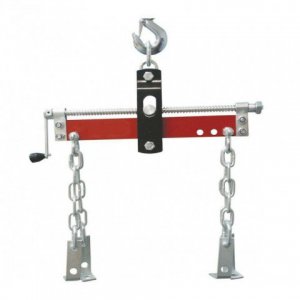- Joined
- Feb 25, 2021
- Messages
- 3,271
Well let's see,
use an overhead piece of unistrut spanning a couple rafters,
get a unistrut trolley: https://www.amazon.com/Genuine-Unistrut-P2950-EG-Trolley-Assembly/dp/B00KN9UA0S
hang a block and tackle from the trolley to a balance beam.
Use the 4:1 balance beam so your total load is ~50kg.
That would give you a broad range of movement, and fine control over a small range for actually printing.
use an overhead piece of unistrut spanning a couple rafters,
get a unistrut trolley: https://www.amazon.com/Genuine-Unistrut-P2950-EG-Trolley-Assembly/dp/B00KN9UA0S
hang a block and tackle from the trolley to a balance beam.
Use the 4:1 balance beam so your total load is ~50kg.
That would give you a broad range of movement, and fine control over a small range for actually printing.
Last edited:

